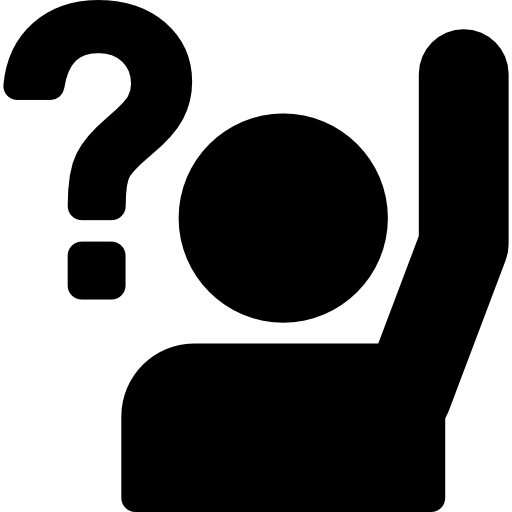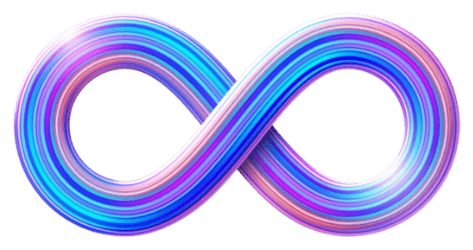More
- Capricho Arabe (1/3)LEVEL 5Famous guitar serenata by Francisco Tarrega.
- BWV 997 Gigue (1/3)LEVEL 5First part of the gigue from the BWV 997 lute suite by J.S.Bach.
- Capricho Arabe (3/3)LEVEL 5Famous guitar serenata by Francisco Tarrega.
- BWV 997 Gigue (3/3)LEVEL 5Third lesson on the Gigue from the BWV 997 lute suite by J.S.Bach
- Bluesland #3LEVEL 4This is the third part in the Bluesland series where we explore the realms of blues territory!
- 1-finger 1-string RiffLEVEL 3By using just one finger on a single string, we can concentrate on what's really important.
- Bluesland #1LEVEL 3This series of lessons will show you some basic bluesy patterns in the Pentatonic Blues scale and its modes.
- Drop 3 ChordsLEVEL 3We are going to talk about dominant 7 chords & inversions and apply them to a basic Blues progression.
- Total Beginner 3LEVEL 1What is rhythm & timing - and how do you read tabs?
Feedback
 Jesse22nd August 2008
Jesse22nd August 2008.... great.. beautiful indeed guys:D
 Dejan Farkas7th August 2008
Dejan Farkas7th August 2008Beautiful

 Toni Suominen7th August 2008
Toni Suominen7th August 2008Beautiful lesson!

 Danilo Capezzuto6th August 2008
Danilo Capezzuto6th August 2008Awesome. Big soul here!
 Ivan Milenkovic5th August 2008
Ivan Milenkovic5th August 2008Beautiful piece Gerardo my friend

 Juan M. Valero3rd August 2008
Juan M. Valero3rd August 2008pretty cool my friend !!!
 Nighthawk12nd August 2008
Nighthawk12nd August 2008This is absolutely beautiful..I never heard of this composer before...thanks for providing such a great piece and the transcription
 Hisham Al-Sanea1st August 2008
Hisham Al-Sanea1st August 2008Excellent Gera .
 Tuubsu1st August 2008
Tuubsu1st August 2008wow, that's definately something I want to learn!

 Eat-Sleep-andJam1st August 2008
Eat-Sleep-andJam1st August 2008Wow ! VERY NICE !

 Gerardo Siere1st August 2008
Gerardo Siere1st August 2008Thank you guys, I´m glad you like it.
 Pablo Vazquez1st August 2008
Pablo Vazquez1st August 2008Beautiful!! Thanks for another great lesson Gera!!!
 Daniel Robinson1st August 2008
Daniel Robinson1st August 2008Wow, very beautiful Gerardo, i can't stress enough how much learning these classical songs will help your guitar playing across the board!
Daniel sigma71st August 2008
sigma71st August 2008Encore!
 JuanMV1st August 2008
JuanMV1st August 2008I'm speechless Gera... well done.
 Henry Dietzel1st August 2008
Henry Dietzel1st August 2008I really like this one a lot, well played Gera!!
 Muris Varajic1st August 2008
Muris Varajic1st August 2008Very,very nice Gerardo!

 Gabriel Leopardi1st August 2008
Gabriel Leopardi1st August 2008Gera! Thank you for delivering us so beautiful music in every lesson!
 ItsMe1st August 2008
ItsMe1st August 2008great playing
 Andrew Cockburn1st August 2008
Andrew Cockburn1st August 2008Beautiful Gerardo, and incredibly soulful playing ...
 Marcus Siepen1st August 2008
Marcus Siepen1st August 2008absolutely beautiful
 Nazgul1st August 2008
Nazgul1st August 2008Excellent! Chill-Music.

 Joe Kataldo1st August 2008
Joe Kataldo1st August 2008Impressive execution

Martin la guitarra1st August 2008
awesome lesson!
Practicing Peers
- Total views: 0
- Member views: 0
- Guest views: 0
- Lesson
- My notes
Hello everyone, it's good to see you again. Today I´m bringing a style that you may be unfamiliar with. This piece, the lachrimae Pavan was composed by John Dowland in the 17 century. You may find it strange but this piece is very popular, there are hundreds of manuscripts and arrangements over this song and it has served as inspiration for many composers.
This version it´s a transcription for guitar from the lute tablature so there are some things you may find useful to know. The lute has a lot of strings so it is not posible to play many chords "plaque", so many chords are played arpegiated. You´ll notice I´m using a capo, it gaves the guitar a lute flavor, it doesn´t have any relationship with tuning. In 17 century nylon or steel string didn´t exist, instead strings made of gut were used, so the tuning was whatever tension those strings could resist.
The renaisance music is very linear and have a poliphonic texture, we´ll have to handle with a lot of voices (lines). This is modal music, the tonal system as a hierarchy of grades wasn´t the norm until the late barroque, be aware off this if you find strange some chord, sequence or their placement.Oftenly chords are the result of the coincidence off the lines, composer of that period were very interested in contrapunct and intervalic teory to deal with that coincidence, the function of the harmony was to share and reforce the vibe of the text. Rennaisance music is mostly based on vocal music, check out http://youtube.com/watch?v=f7vLOjzG4no or look for a song called flow my tears and you will find it familiar. Being based on vocal music means than the phrasing is based on the lyrics and not on armonic structure.
You will need to tune the third string to F#.
Try playing, or better singing each line alone, as you can see, different lines has different rythm and stem direction in the standart notation score, also they jump very very little, except the bass, we are dealing with vocal music here.
Try to play this piece with very light touch, and avoid rest strokes, they don´t fit in this style.
In the standart notation score I include several alternative fingerings, specially for the right hand.
Its a good idea to feel the in two beats per measure, but first you should try studying with 8 beats per measure, so you´ll know where are all the notes placed.
For the fast dominant typical cadence, the rythm is not so strict, remember we are following a "singer", so we let him take his time.
The last thing I must talk you about are teorical values, there are rythm values in the score that are not posible to maintain to the fullest, so we must make a choice of what do we sacrifice, and we must do it so the listener dont realice there is any note missing. I´ll talk about it in the others videos.
Notation:
Right hand
i= index
m= medium
a= ring
p= thumb
Left hand
1= First finger
2= Second finger
3= Third finger
4= Fourth finger
Hope you like it. Good luck.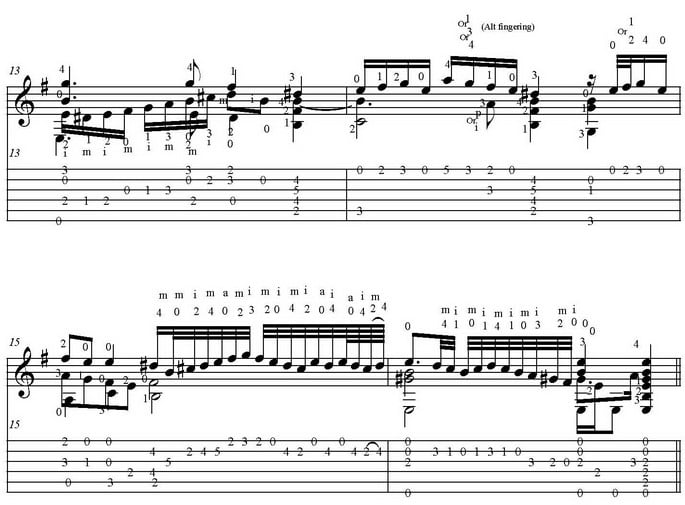
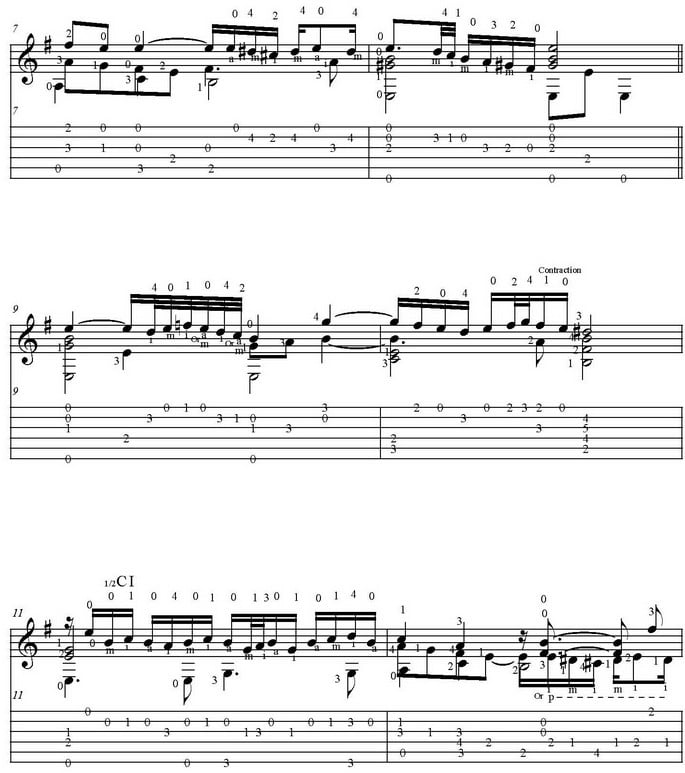
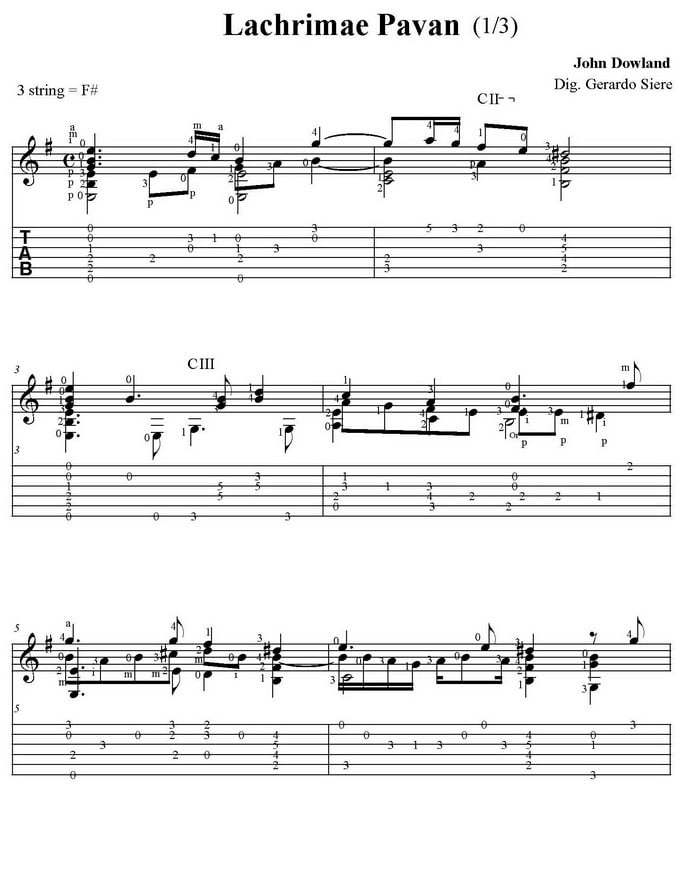
From this course:
Jump to start: Home or `s` , you can also click/tap the lesson part again (the numbers above player)
Go to next part: PageUP or End.
Volume: ArrowUp / ArrowDown keys
Go to any part: Number keys (combinations also possible)
Pause or play: `k` or space key
Fullscreen: `f`, esc to close
Increase / decrease speed : `+` or `-`




